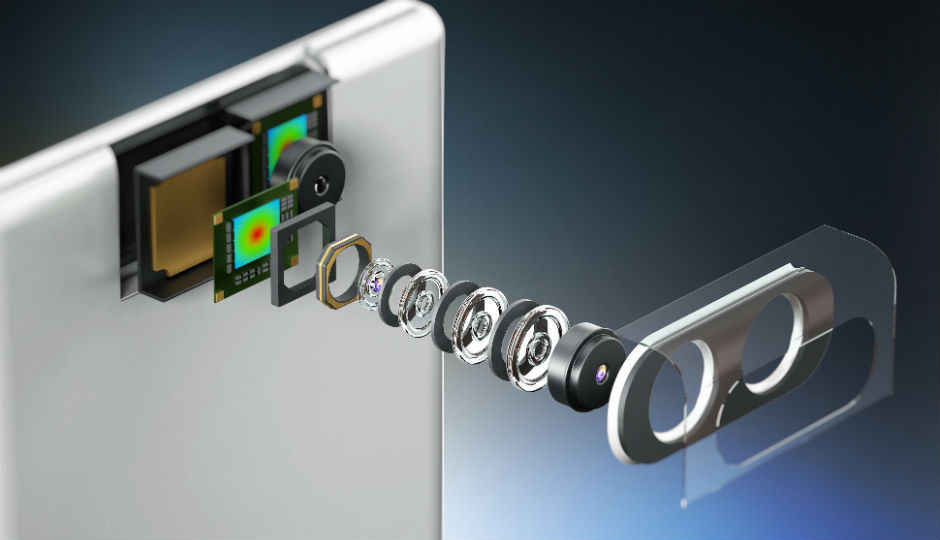Qualcomm expects smartphones with 100MP camera sensors later this year

A conversation with Qualcomm's imaging head Mr Judd Heape revealed camera vendors are planning to announce 100MP camera sensors later this year. Should you get excited?
Highlights:
- Qualcomm revealed smartphone camera sensor makers are expected to annouce 100MP and above cameras later this year.
- The higher pixel count will be achieved by shrinking the pixel size.
- Qualcomm has already enabled support for 192MP snapshot in a range of Snapdragon chipsets.
The megapixel war among smartphone OEMs might have stagnated for a while with 16MP and 12MP cameras having become the norm for the past few years. However, ever since the flagship 48MP camera sensors from Sony and Samsung have hit the market, the megapixel wars have been revived once again. But 48MP is not where it ends, it seems. In an interaction with Qualcomm’s Senior Director of Product Management, Judd Heape, Digit.in learnt that camera sensor vendors are already working on higher megapixel sensors due to launch later this year.
Mr Heape said Qualcomm is expecting camera sensors a little above 100-megapixels to hit the market later this year, with devices implementing the large-format sensors in 2020. Furthermore, he revealed that 2020 will see the megapixel count jump to the mid-100s.
Qualcomm recently added support for snapshots in 192-megapixel resolution in a range of Snapdragon 6-series, 7-series and 8-series chipsets. Mr Heape demystified the high number by saying that this is the upper limit of the ISP. Provided the OEM doesn’t want to use features like zero-shutter lag and multi-frame noise reduction, the ISP can output images of up to 192-megapixel. That doesn’t mean camera vendors will be releasing 192MP camera sensor just yet. However, we were told that while 192MP cameras will not be a possibility in the near future, Qualcomm is expecting camera sensors with 100MP resolution and above to hit the market later this year.
When asked about how the camera sensors will accommodate so many pixels without increasing the size of the camera sensor beyond acceptable limits, Mr Heape said that vendors will attempt to shrink the size of the individual pixels further to make room for more pixels.
He also expects sensor sizes to increase, but not by much. Vendors will try to keep the sensor size within acceptable range, but he didn’t overrule the possibility of a 1-inch sensor later in the future for smartphones.
Having said that, Mr Heape, who is an expert in the field of camera optics and image processing, doesn’t really support the method camera vendors are adopting to improve the pixel count in smartphone cameras. According to him, no one really needs anything over 48MP. The 48MP sensors cause problems with power consumption and throw storage issues. Achieving a higher pixel count by shrinking the pixels further (the 48MP sensors from Sony and Samsung already have pixel sizes shrunk to 0.8 microns) might lead to lesser light being captured, which might ultimately be counterproductive. Instead, he wishes camera vendors should focus more on improving the quality of the individual pixels and offer bigger, better pixels rather than shrinking them to accommodate more pixels in cameras.
However, he was also quick to point out that by having a larger pixel count, OEMs won’t just win a self-defined race of putting a higher number on the box of their devices, but also use the higher number of pixels to achieve better low-light photos. This is by using what Qualcomm is calling the “binnned mode” which essentially combines four pixels into one to achieve light sensitivity that’s four times higher. However, the resulting output resolution is cut down by a factor of 4.
This is something that we are presently witnessing in 48MP camera phones like the Xiaomi Redmi Note 7 Pro and the Honor View 20. Both of which output photos in 12-megapixel resolution by default. It uses pixel binning to achieve this and according to the OEMs, this leads to higher dynamic range, better clarity and more sharpness. 48MP
As for the support for 192MP cameras, Qualcomm did update the spec-sheet of the Snapdragon 670, 675, 710, 712, 845 and the 855. However, the company clarified that there was no change made to the ISP or the DSP to support the higher resolution. The support was in fact there from the beginning and can be made use of by OEMs, provided there is a 192MP camera sensor for them to implement.
Presently, Sony makes a 100-megapixel camera sensor that’s 53.7mm x 40.4mm in size. It’s much, much larger than the standard camera sensors sizes used in smartphones. Using a sensor larger than the present range can lead to smartphones becoming thicker. There’s also need for larger and longer focal length lenses to cover the larger sensors, which doesn’t seem to be physically possible in smartphones considering the lenses are integrated and mostly flushed to the phone’s body.
While 100-megapixel camera sensors do sound like a big thing and they will certainly be hyped up by OEMs when they do hit the market, we will side with Qualcomm in this case and bat for larger, better pixels than a higher pixel count on smartphones.
Related Reads:
Qualcomm adds support for 192MP camera sensors in 6-series, 7-series and 8-series chipsets





